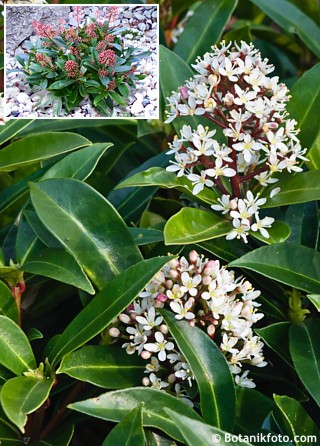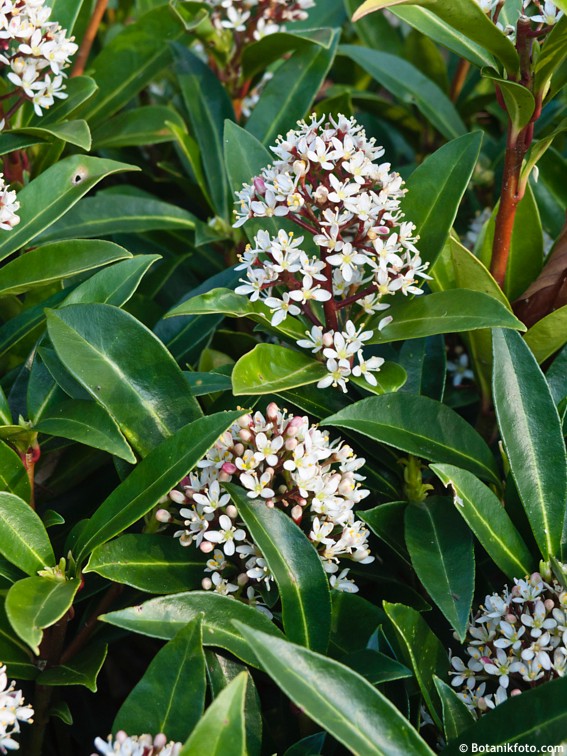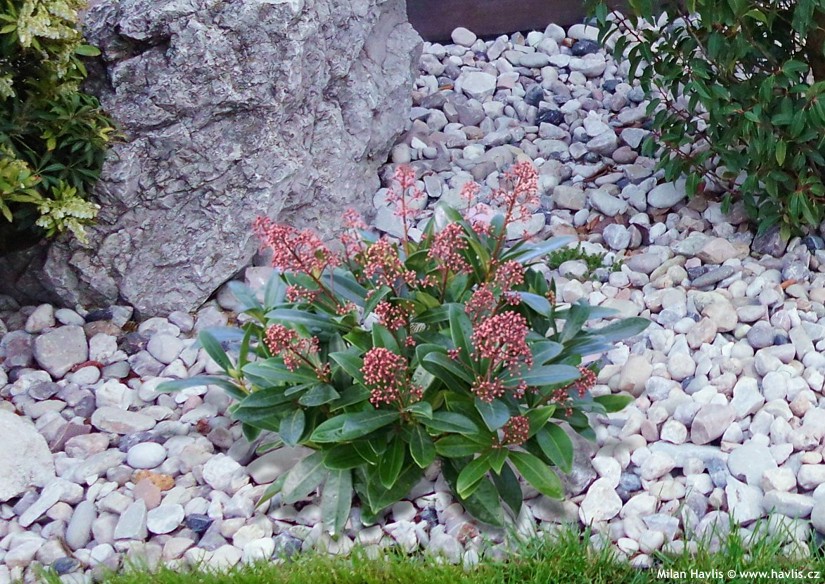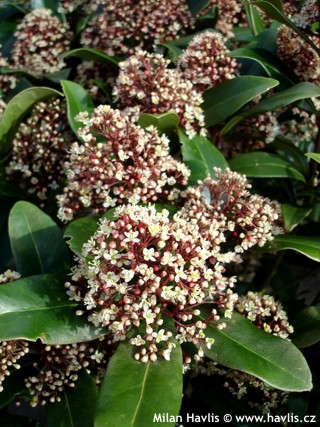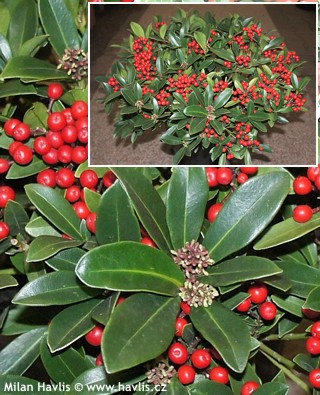Skimmia japonica 'BREMEN' Japanese skimmia
size/type
small shrub,small shrub
usual height
0,3-0,4m
usual width
0,5-0,6m
leaves
evergreen conifer
colour of leaves
flowers
showy
colour of flowers
blooming time
March-April
location
semi-shade to shade
soil type
acidic (peaty)
soil moisture requirements
evenly moist (dislikes drought)
USDA zone (lowest)
5b (down to -27°C)
winter protection
for zone 5+6

for zone 7

categorized
Skimmia
Skimmia is a small, evergreen shrub from Japan. After the year 2000 there have been a number of new varieties which are still being tested for stability of their featured characteristics. The aim is to select plants distinctly different from the species.Description of the plant:
Bremen is a dwarf, slow growing, male skimmia selection from Germany. It has evergreen, leathery, narrowly elongated, deep green, and glossy leaves. In early spring tiny fragrant flowers come out from showy clusters of purple red flower buds. Same like Otto Luyken cherry laurel it forms a neat and compact shrub so it requires no pruning.If you plant it well you needn’t look after it any longer except for occasional watering in dry spells. There are a few rules you have to follow if you want your skimmia look perfect: the soil has to be always moist but extremely well-drained, acidic (add peat), light (add leaf mould), and most of all humus-rich. The best location is dappled shade or even deep shade (shady back of your house or under thick canopies of tall trees). When leaves turn pale or even yellow the plant suffers from too much sun or water, or too little nutrients in the soil. Skimmia is tolerant of atmospheric pollution. The plant is poisonous. It is hardy to about -27°C (USDA zone 5b) and on protected sites without sunlight it withstands cultivation in outdoor containers.
Last update 24-01-2017
QUICK PRICE OVERVIEW
CURRENTLY SOLD OUT
WANT TO TRY A SIMILAR PLANT?












